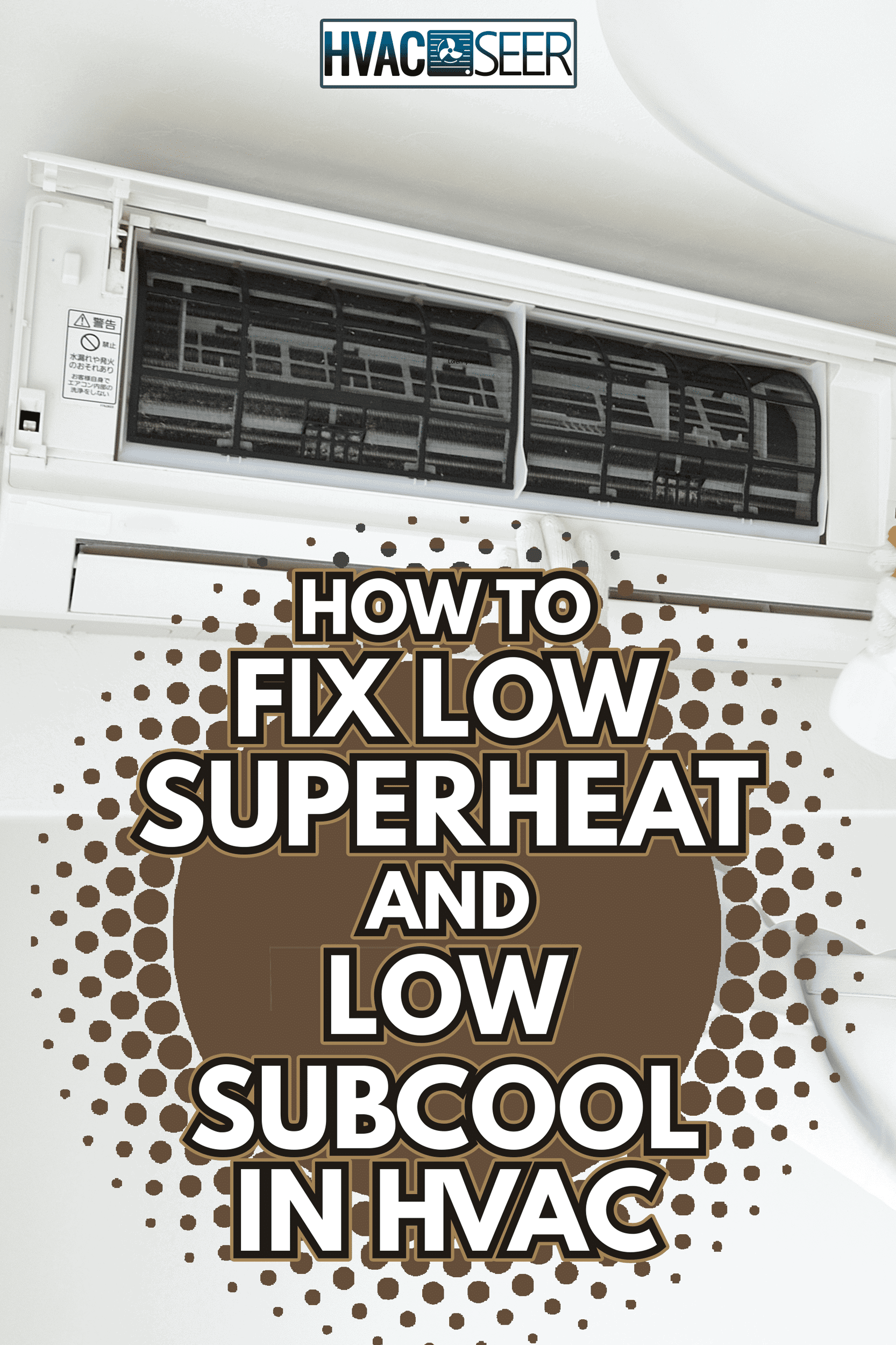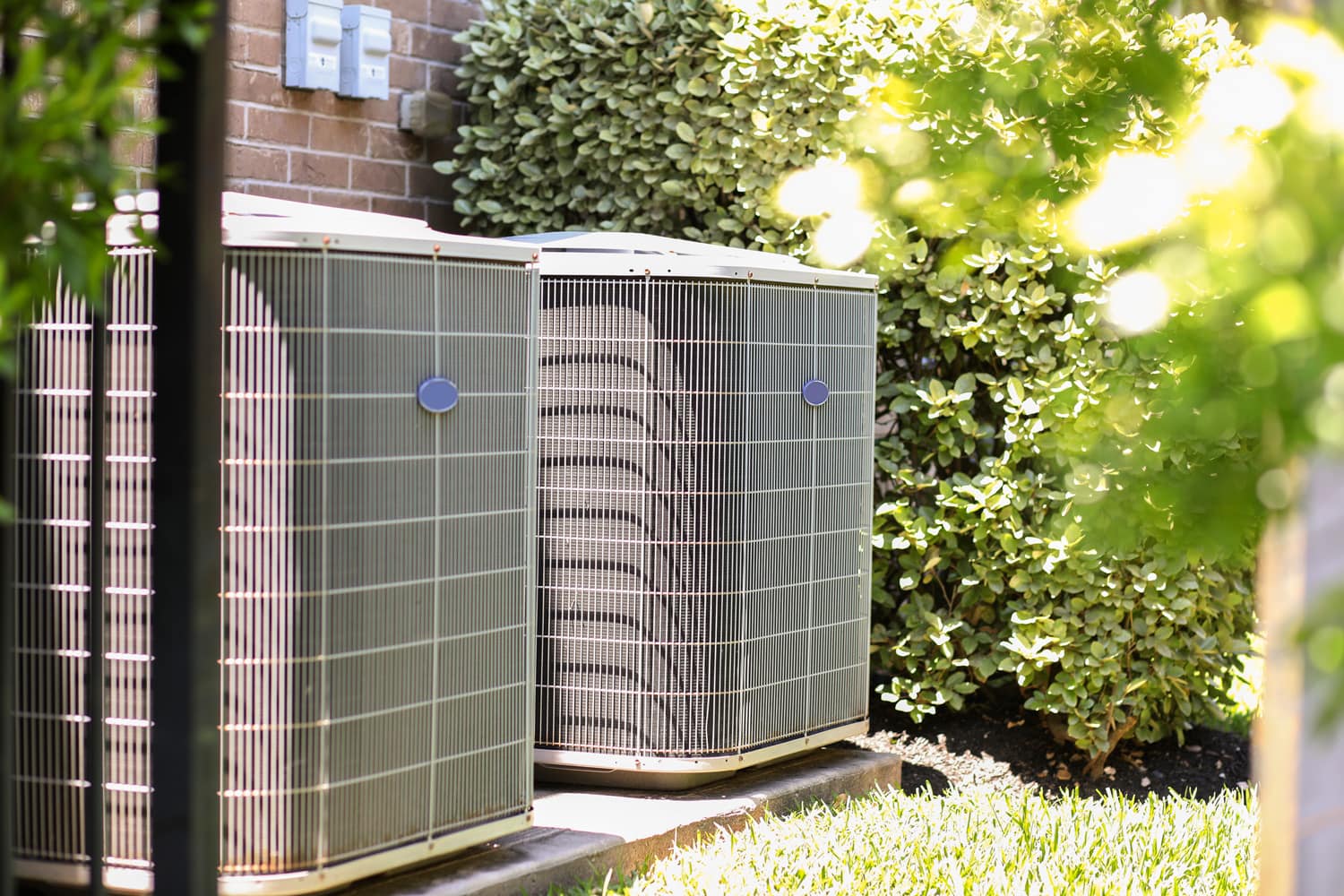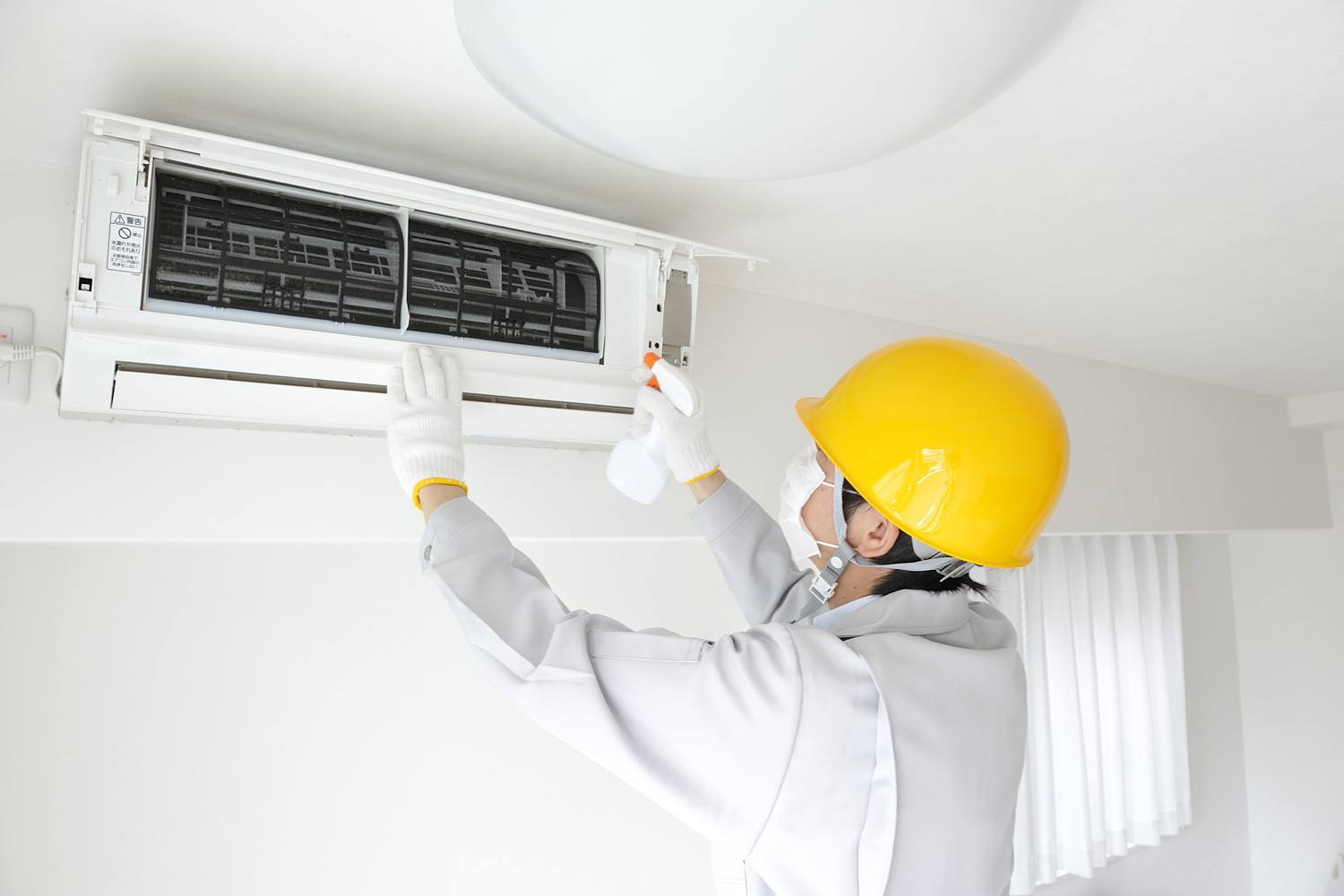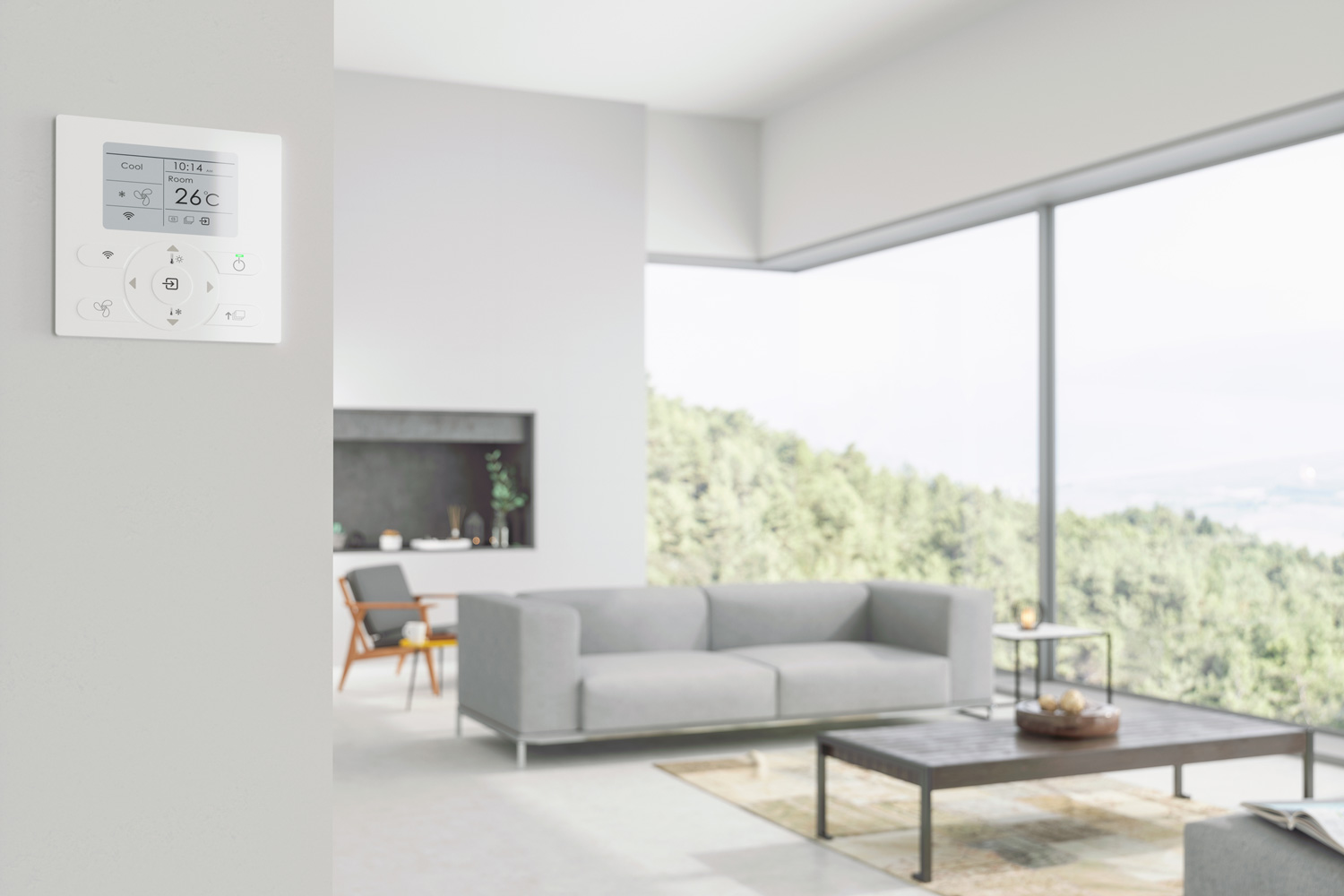Your HVAC system should ensure that your indoor climate remains comfortable, but this is impossible when your system experiences low superheat and low subcool. The reasons for these issues vary, from the excess amount of refrigerant to reduced airflow. Fortunately, we've researched how you can fix this immediately once you have pinpointed the root cause.
Low superheat with low subcooling indicates that your evaporator is low on heat and has limited refrigerant in the condenser. To increase superheat, you can try turning the adjusting screw clockwise on the valve setting. Then, add a refrigerant to increase subcooling.
There are many causes and more effective fixes that can solve your low superheat and low subcool in HVAC. If you want to learn more about fixing these HVAC issues and maintaining your indoor climate, keep reading below!

Causes of Low Superheat

Low superheat can have multiple causes that create a domino effect. This effect starts with one part of the HVAC anatomy and ends on the other side, or the indoor climate.
Refrigerant Overcharge
Low superheat occurs when there is too much refrigerant entering the coil but not enough heat to vaporize it. This causes the refrigerant to overcharge since there is not enough evaporator and condenser airflow.
Metering Overfeed
Another cause could be that the metering device is overfeeding. It may be allowing high amounts of refrigerant to enter without anything to balance it out, causing a flooded coil.
Uninsulated TEV
If the thermostatic expansion valve or TEV is not insulated, it will also cause the metering device to overfeed. This will cause the suction and discharge pressure to increase.
Low Evaporator Air Flow
Low evaporator airflow is the most common culprit for superheating. The evaporator airflow is responsible for heating up the refrigerant and vaporizing it over the coils, so without it, there is low superheat.
This is especially dangerous since the unvaporized refrigerant can enter the suction line, enter the compressor, and cause water damage which is potentially irreparable.
Oversized Equipment
An oversized unit causes not only low superheating but also causes short cycling. Short cycling is when a system fails to complete a heating or cooling cycle that was set on the thermostat.
You can see that a system is oversized when there is not enough heat to completely vaporize the refrigerant. This causes superheating as well as compromises your indoor heating and cooling.
Low Condenser Air Flow
The low condenser airflow causes the condensing temperature to increase as well as the pressure along with it. The refrigerant is then delivered to the metering device at high pressure.
From there, the refrigerant becomes overcharged, resulting in a low superheat as well as low subcooling.
Causes of Low Subcooling
Low subcooling can happen simultaneously with low superheating. This can be caused by a bad motor, defective capacitor, or external obstructions surrounding the unit.
Low Refrigerant in the Condenser
If there is no refrigerant to be vaporized in the first place, it would cause low subcooling. The superheat will help in determining whether the low suction is caused by limited heat or if there is no refrigerant at all.
Undersized Metering Device
If your metering device is undersized, it may be allowing only small amounts of refrigerant to enter into the evaporator coils. This will cause low subcooling.
This is also the reason why you should first check the subcooling before adding refrigerant to the evaporator.
Defective Capacitor
A defective capacitor causes the motor to have problems, which topples over to the system's performance. A low-performing system results in lower airflow, eventually causing low subcooling.
Once the motor reduces speed, it will cause a domino effect to the entire system and compromises its effectiveness.
Low Superheat and Low Subcooling
Understanding the relationship between low superheating and low subcooling can be complicated.
One basic way to understand it is to remember that low superheating signals an excess amount of refrigerant and not enough heat in the evaporator, while a low subcooling indicates that there is an excessive amount of refrigerant in the condenser.
You will need to maintain a temperature in the TEV to be between 10 °F to 18 °F.
How To Care For Your HVAC System

Low superheating and low supercooling are a result of a defective system. Caring for your HVAC system is the key to making sure your heating and cooling remain consistent throughout the year.
Here are some maintenance tips you can use for your HVAC units.
Keep Your Unit Clean
A simple occasional vacuuming of your unit's fins can do wonders that can expand your AC's lifespan. Remember to be careful, though, because the fins can be quite fragile.
If you are unsure, contact your local HVAC professional to occasionally do some tune-ups to your unit.
Do Not Let your AC Pad Sink
Your unit's concrete vessel can sink on the ground over the years. A little sinking may be fine, but it can start harming your unit if it starts touching the coolant tubes and electrical lines.
You should also be alert about the water puddles that can potentially catch your unit. Make sure that it is still at a safe level.
Get a Programmable Thermostat

If you live a particularly busy life, it might be time to get a programmable thermostat to keep your unit running smoothly. It allows you to automatically lower the temperature, preventing the unit from overworking and straining.
Add a Duct Booster for Home AC units
You can do this to prevent uneven temperatures throughout your home. A vent booster fan or a duct can do wonders to your indoor climate.
This will create a better environment for your HVAC system. Equal temperatures can prevent heat and air leaks, providing better insulation all year round.
Unclog the Condensate Drain Tube
When you see a puddle of water start to collect on your floor every time the AC is on, you have a problem with the condensate tube. This can result in low subcooling and make your indoor temperature comfortable.
You will need to clean your condensate line immediately since fungi and bacteria can accumulate along the condensate pan drain tube, exposing you to potential health risks.
Read: "How Often Should You Drain A Portable Air Conditioner?"
Replace the Filter
Cleaning the filter regularly should be a no-brainer if you are an owner of a cooling system. A clean filter will prevent your unit from working harder than necessary.
If you leave your filter dirty, it can strain your unit and lead to more expensive and time-consuming repairs.
Control Heating with an Upgraded Insulation
Upgrade your insulation by:
- installing weatherstripping along the gaps,
- upgrading your window glass,
- upgrading doors to fiberglass,
- and attaching drapes and blinds on your windows.
Upgraded insulation will not only protect your HVAC unit but will also make your home more energy-efficient. An energy-efficient home is less prone to the HVAC system being damaged.
How Much Does it Cost to Repair an AC unit?
No matter how much you try to maintain your system, there are instances where you may still need to have your HVAC unit repaired. Different repairs require different costs, and it will depend on the severity of the issue.
Here are some of the costs to different air conditioning issues:
Refrigerant Leak
A faulty refrigerant may be the cause of a low subcool and low superheating. The cost for resupplying your coolant can cost you between $100 and $350, but it can be higher depending on your unit.
Electrical Issues
Issues surrounding the circuit board, breakers, or fuses can put a damper on your convenience. These electrical issues can affect your motor, contactor, or worse, the compressor.
Electrical components can run you for $75 to $290. The circuit board can be pricier since it is the critical part of the unit, potentially costing you $125 to $625, depending on your unit.
You will need to contact an HVAC professional if you are experiencing electrical issues.
Thermostat Issues

Your thermostat communicates with your cooling system. This is the first thing you can check when you notice issues around your unit since it could easily be the culprit. Thermostat issues can cost you about $75 plus labor.
Evaporator and Condenser Coils
Issues with evaporator and condenser can result in low subcooling and low superheating. Replacing your coils can cost you somewhere between $675 to $1,300 plus labor, depending on your air conditioning unit.
Final Thoughts
Low superheat and low subcooling is inconvenient problems that require immediate attention.
You will need to pay attention to your heating and cooling patterns to see if you have problems and try to adjust them to maintain a comfortable atmosphere.
If you enjoyed this article, check out "How Much Power Does A Portable Air Conditioner Use? [By BTU]."
